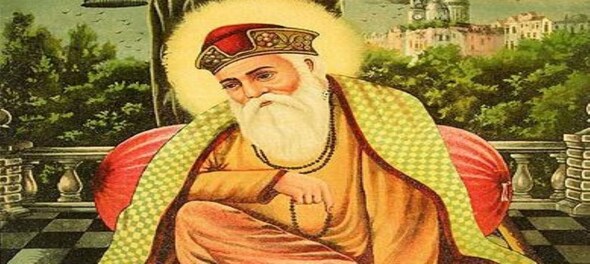
Guru Nanak Jayanti, also known as Gurpurab, is an important festival for the Sikh community across the world. The day is celebrated on the birth anniversary of Guru Nanak Dev, the first Sikh guru and the founder of Sikhism.
Guru Nanak Dev was born on the full moon day of the Kartik month or on the Kartik Purnima day as per the Nanakshahi calendar. This year Kartik Purnima falls on November 27 and Guru Nanak Jayanti will be celebrated on that day.
History of Guru Nanak Jayanti
Guru Nanak was born on Purnima Tithi in the month of Kartik in the year 1469 in Rai Bhoi Ki Talwandi in Pakistan. A Gurudwara was constructed at his birthplace, now called Nankana Sahib, situated in the Punjab province of Pakistan.
During the first quarter of the 16th century, Guru Nanak embarked on extended spiritual journeys known as ‘udasiya.’ According to his own verses, he travelled to various places in the ‘nau-khand,’ representing the nine regions of the earth, which likely included major Hindu and Muslim pilgrimage centres.
Some contemporary accounts suggest that Guru Nanak’s travels spanned Tibet, much of South Asia, and Arabia, commencing in 1496 at the age of 27 when he stayed away from his family for a thirty-year period. These accounts claim that Nanak visited some locations like Mecca, Achal Batala, Baghdad, and Multan, engaging in spiritual interactions with diverse groups.
In 1508, Guru Nanak visited the Sylhet region in Bengal, as suggested by the Janamsakhis. There are also accounts indicating Nanak’s visit to the Ram Janmabhoomi temple in Ayodhya in 1510-11 CE.
The inscription in Baghdad serves as the foundation for writings by Indian scholars asserting that Guru Nanak journeyed through the Middle East. Some even claim that he visited Mecca, Jerusalem, the Vatican, Azerbaijan, and Sudan.
Guru Nanak Jayanti's significance and celebrations
Guru Nanak Jayanti holds immense significance for the Sikh community. This auspicious occasion is celebrated with great enthusiasm and the day is marked by spiritual observances, community services and joyous festivities.
The teachings of Guru Nanak emphasise ‘Ik Onkar’ - the oneness of God, equality among all individuals regardless of caste or creed and the importance of selfless service. Guru Nanak’s philosophy revolves around the principles of compassion, honesty and devotion to a life of righteousness.
The celebrations at Gurudwaras kick off two days before Guru Nanak Jayanti. During this time, a continuous 48-hour reading of the Guru Granth Sahib, known as Akhand Path, is organised. On the day preceding Guru Nanak’s birthday, a procession called Nagar Kirtan is taken out. This procession is led by five men, known as the Panj Pyare, who carry the Sikh triangular flag, Nishan Sahib.
During the procession, a palanquin holds the revered Guru Granth Sahib. People sing hymns together, play traditional musical instruments, and showcase their skills in martial arts. The joyous procession moves through streets adorned with flags and flowers, creating a vibrant and festive atmosphere.
Another important element is the langar, a community meal organised at Gurudwaras. This community feast, open to everyone, including those in need, emphasises the importance of selfless service and compassion, reflecting the teachings of Guru Nanak Dev.
(Edited by : Sudarsanan Mani)
Check out our in-depth Market Coverage, Business News & get real-time Stock Market Updates on CNBC-TV18. Also, Watch our channels CNBC-TV18, CNBC Awaaz and CNBC Bajar Live on-the-go!


BJP replaces Poonam Mahajan with lawyer Ujjwal Nikam for Mumbai North Central Lok Sabha seat
Apr 27, 2024 7:53 PM
Meet Amritpal Singh, the separatist leader contesting Lok Sabha polls from Punjab's Khadoor Sahib
Apr 27, 2024 7:18 PM

